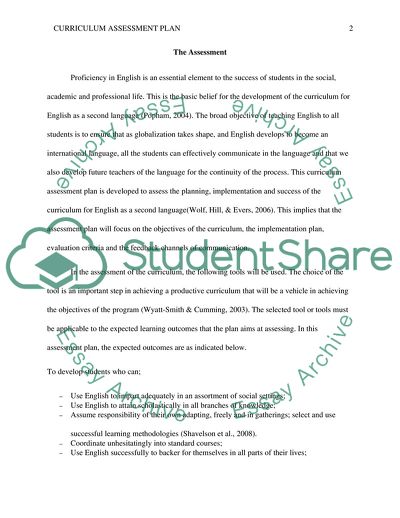Cite this document
(The Objectives of the Curriculum, the Implementation Plan the Feedback Research Proposal Example | Topics and Well Written Essays - 1250 words, n.d.)
The Objectives of the Curriculum, the Implementation Plan the Feedback Research Proposal Example | Topics and Well Written Essays - 1250 words. https://studentshare.org/education/1847512-assessment-plan
The Objectives of the Curriculum, the Implementation Plan the Feedback Research Proposal Example | Topics and Well Written Essays - 1250 words. https://studentshare.org/education/1847512-assessment-plan
(The Objectives of the Curriculum, the Implementation Plan the Feedback Research Proposal Example | Topics and Well Written Essays - 1250 Words)
The Objectives of the Curriculum, the Implementation Plan the Feedback Research Proposal Example | Topics and Well Written Essays - 1250 Words. https://studentshare.org/education/1847512-assessment-plan.
The Objectives of the Curriculum, the Implementation Plan the Feedback Research Proposal Example | Topics and Well Written Essays - 1250 Words. https://studentshare.org/education/1847512-assessment-plan.
“The Objectives of the Curriculum, the Implementation Plan the Feedback Research Proposal Example | Topics and Well Written Essays - 1250 Words”. https://studentshare.org/education/1847512-assessment-plan.


